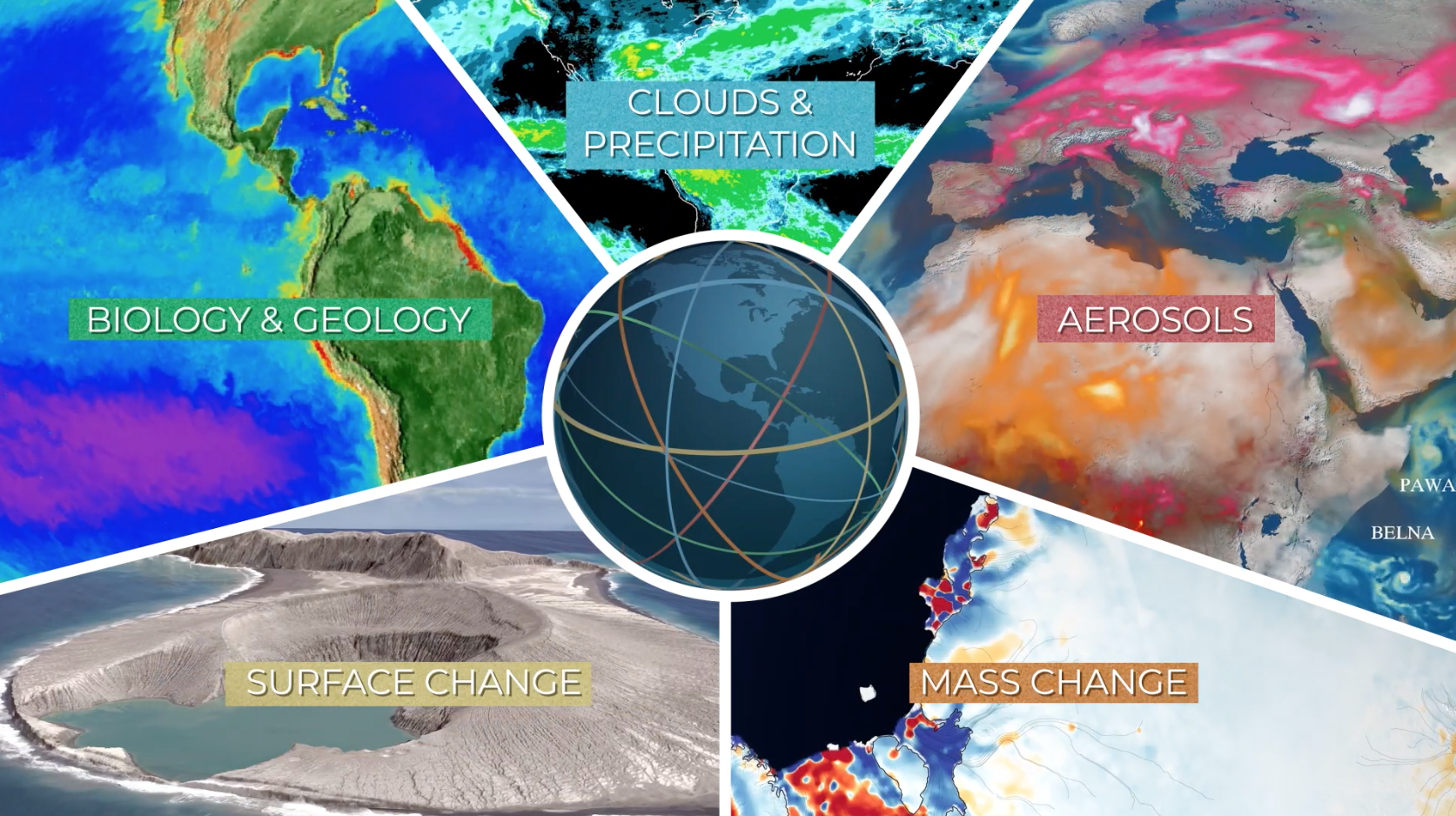Earth Day 2020: Apollo-8 to Earth observing fleet
Push in from the far side of the Moon to Apollo-8 take the "Earthrise" photo; then push in to NASA's Earth observing fleet in 1970 (the first Earth Day), then transition to the Earth observing fleet in 2020 (the 50th anniversary of Earth Day)
This video is also available on our YouTube channel.
This visualization was created as an introductory shot to video celebrating the 50th anniersary of Earth Day. The camera approaches the moon from the far side, with Earth behind the moon. The camera moves over the limb revealing Apollo-8, when Bill Anders took the iconic "Earthrise" photo that inspired Earth Day and the environmental movement.
The camera then pushes in quickly to the Earth revealing the Earth observing spacecraft that were in orbit in 1970, the year of the first Earth Day. Finally, the orbits from other years are flashed on until we reach the orbits for 2020, the 50th anniversary of Earth Day.
Credits
Please give credit for this item to:
NASA's Scientific Visualization Studio
-
Visualizers
- Greg Shirah (NASA/GSFC)
- Ernie Wright (USRA)
- Horace Mitchell (NASA/GSFC)
-
Producer
- Ryan Fitzgibbons (USRA)
-
Technical support
- Laurence Schuler (ADNET Systems, Inc.)
- Ian Jones (ADNET Systems, Inc.)
Release date
This page was originally published on Tuesday, April 21, 2020.
This page was last updated on Monday, January 6, 2025 at 12:16 AM EST.
Missions
This page is related to the following missions:Series
This page can be found in the following series:Datasets used
-
CelesTrak Spacecraft Orbit Ephemeris
ID: 454This dataset can be found at: http://celestrak.com
See all pages that use this dataset -
BMNG (Blue Marble: Next Generation) [Terra and Aqua: MODIS]
ID: 508Credit: The Blue Marble data is courtesy of Reto Stockli (NASA/GSFC).
This dataset can be found at: http://earthobservatory.nasa.gov/Newsroom/BlueMarble/
See all pages that use this dataset -
DEM (Digital Elevation Map) [LRO: LOLA]
ID: 653 -
GEOS-5 Cubed-Sphere (GEOS-5 Atmospheric Model on the Cubed-Sphere)
ID: 663The model is the GEOS-5 atmospheric model on the cubed-sphere, run at 14-km global resolution for 30-days. GEOS-5 is described here http://gmao.gsfc.nasa.gov/systems/geos5/ and the cubed-sphere work is described here http://sivo.gsfc.nasa.gov/cubedsphere_overview.html.
See all pages that use this dataset -
Apollo 8 Trajectory Reconstruction
ID: 735This dataset can be found at: http://ntrs.nasa.gov/archive/nasa/casi.ntrs.nasa.gov/19740072902_1974072902.pdf
See all pages that use this dataset
Note: While we identify the data sets used on this page, we do not store any further details, nor the data sets themselves on our site.


![Music: "Solar Winds" by Ben Niblett [PRS] and Jon Cotton [PRS] courtesy of Universal Production Music.
Complete transcript available.](/vis/a010000/a013600/a013652/BushFire_Still_2.jpg)
